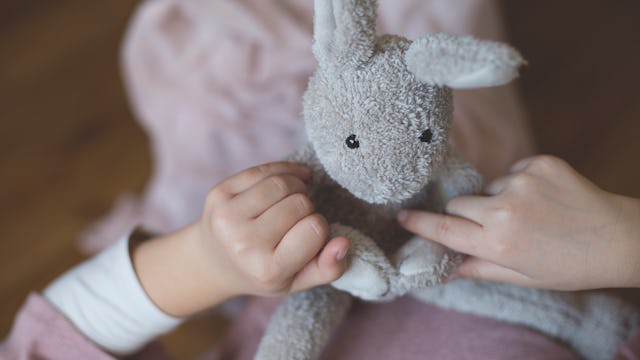This Is Why It's So Important To Teach Kids The Real Names Of Their Body Parts

Let’s all take a vow right now to never use the words wee wee or coochie again – for the health and safety of our kids
Many of us grew up with alternative names for some of our more private body parts, from tush to our vajayjay. But while these nicknames for our bikini zones probably made parenting more comfortable and bathroom talk easier, it does a disservice to kids in a couple of different ways. It’s time to drop the cutesy nicknames for genitals when it comes to our kids, and here’s why.
First and foremost, when kids know the correct name for their body parts – words like anus, penis, testicles, vulva, and vagina – they are better able to tell doctors about their needs. For example, if they’re having pain or another problem, they feel both able and comfortable to talk about it.
For another, more serious example, they’re able to better tell someone, whether a trusted adult, a social worker, or a doctor, when someone has touched them inappropriately.
Sandy K. Wurtele, a psychology professor at the University of Colorado in Colorado Springs, explained in The New York Times:
“Without proper terminology, children have a very hard time telling someone about inappropriate touching,” Dr. Wurtele said. “If a child says someone touched her cookie, it would be very difficult for a listener to know.”
In addition to being better able to tell adults about sexual abuse, it might also ward off sex abuse in the first place: offenders looking for victims are less likely to pick confident, informed kids who obviously talk openly with their parents about their bodies, and who have probably been told that other people touching their private parts is not okay.
On a whole other level though, teaching kids the appropriate terms for their body parts is important for reasons of self-esteem, confidence, and self-love.
“It helps children develop a healthy, more positive body image, instead of using nicknames that their genitals are something shameful or bad,” Wurtele said. “It also gives children the correct language for understanding their bodies and asking questions about sexual development.”
Basically, when parents use slang or nonsense to name kids’ genitals, they’re sending a loud and clear message that you shouldn’t talk about those things, and that they are unhealthy or shameful. By naming them – even if it makes a parent uncomfortable because of how they were raised – they’re doing a better job at making sure their kids know and love their bodies. Parents are also making sure that kids know that you’ll treat any questions they have without embarrassment (or with minimal embarrassment) and in a matter-of-fact way. Studies have shown that kids who use these terms are more confident, more body-positive and more open.
“I often say to parents as a fellow parent and a fellow grandparent, look, it’s sometimes hard to talk about these names and use them, if when you were a child they were not spoken to you,” Robie Harris, a children’s book author who teaches kids about sex and their bodies, also told the Times. “But if you take a deep breath and just plunge in, these are the right things for kids to know, that these are parts of their body they can be proud of and it’s O.K. to say these words.”
How can you learn to teach your kids how to refer to their body parts? A study found that even though kids in preschool learn the proper names for their body parts, only kids with parents who used the right terms caught on. So – don’t leave this important task to other educators. You can’t start early enough: use proper terminology when changing diapers, taking baths, or any other time it might come up.
One way to start is simply learning about how to teach kids consent at every age, starting with when they are a toddler. You’ll find that using the correct terminology for everything, from body parts to sex acts, will help you keep your kid safe, healthy, and smart as they grow up and start their own relationships.
For the younger kids, ages 3 to 7, Harris’ books can be a great way to start the conversation, especially if you’re uncomfortable with the topic. Her book, Who Has What?, is a really good place to start.
Image via Amazon
Finally, realize that you can teach that kids shouldn’t say, yell the word penis in the grocery store, but at the same time let them know that there’s not a stigma about talking about your penis in the appropriate forums, like with a doctor or when you have a concern or question. These body parts are just as good and healthy an normal as other body parts – they just happen to be your private ones.
So – go forth and correctly name private parts with your kids. Say it with us: penis, clitoris, vulva, scrotum, vagina, anus! We promise it gets easier over time!
This article was originally published on